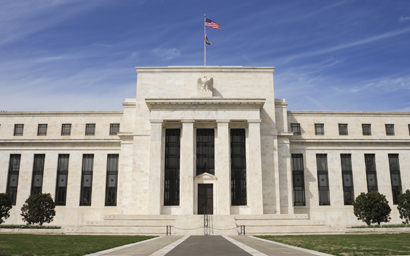Asset prices are “extremely concerning” following the latest Federal Reserve rate reduction that was meant to support them – but there is evidence to suggest that investors may increase their investment soon, one of State Street’s macro experts has said.
Describing the Fed interest rate reduction on Sunday and the additional quantitative easing (QE) measures from America’s central bank as a “hail mary” pass (a long, usually desperate pass in American football), Michael Metcalfe, global head of macro strategy at State Street Global Markets, says the fall in market prices following it suggests “the ball has been dropped”.
The commentary chimes with David Roberts, head of the Liontrust global fixed income team, who said on Monday that the Fed action – which comes at a time when markets are in unchartered territory due to coronavirus – “spooked” markets into descent for a second time this month.
State Street’s Metcalfe says although the ball may have been dropped after the Fed help, when markets are in times of stress and as illiquid as they are now, it can be wrong to interpret investor sentiment from price moves.
“Our sentiment metrics actually show that long-term investors did become a little less risk averse after the first Fed ease [March 3], even though the impact on prices was awash with other market participants liquidating holdings. Given the size and scope of the policy moves over the weekend [March 15], we would expect a similar reaction this week, to resist further capitulation on asset holding where possible and riding out this wave of selling, even if the price action for the moment is extremely concerning.”
One of Unigestion’s macro experts is watching for when G7 action – should it come – will lift asset prices.
Guilhem Savry, head of global macro and dynamic asset management at the Geneva-based firm, said Unigestion’s macro team now expects a recession in the global economy – but that asset prices could jump significantly if, like in 2008, supportive announcements came from the G7 or central banks, the latter enacting global measures.
Nevertheless, the current environment is exceptional, he says.
“Generally, macroeconomic recession, market correction and systemic liquidity risk are distinct, separated in time and in their causal relationship. The current context is exceptional because these three phases are occurring simultaneously and interacting on a larger scale than in previous episodes.
“The 2020 crisis is therefore distinct from the many economic and financial shocks that we have experienced since the 1990s. Firstly, the world economy is currently affected by an exogenous shock that no one controls, unlike the supply or demand shocks that triggered recessions in the past.”
Ed Smith, head of asset allocation research at Rathbones, says the Fed is “not running out of road” in terms of policy measures – conflicting with a widely held view that central banks rates are too low to go further.
“There may be suggestions the Fed is now running out of road. This isn’t accurate, and there is plenty more it could do,” Smith says.
The central bank could:
- Cut rates into negative territory (academic studies suggest that interest rate cuts into negative territory are up to 90% as effective as cutting rates when the starting point is positive, says Smith)
- Do “plenty more” QE
- Relaunch the Commercial Paper Funding Facility
- Relaunch the Term Auction Facility (TAF – essentially long-term bank funding like the UK or Europe’s ‘TLTROs’)
- Relaunch the Troubled Asset Relief Programme, better known as ‘TARP’, to buy distressed corporate bonds if necessary.
“Investors are still waiting on fiscal stimulus from the US. As we said last week, we expect this to be held up by political bickering – but should come by the end of the week,” Smith said.
“Fiscal stimulus is important, because all of the policy tools mentioned above are designed to stop financial dislocation and crisis, not a social crisis. But while we wait for the Fed, the good news is that we’ve seen a lot of stimulus around the world so far.”
© 2020 funds europe





